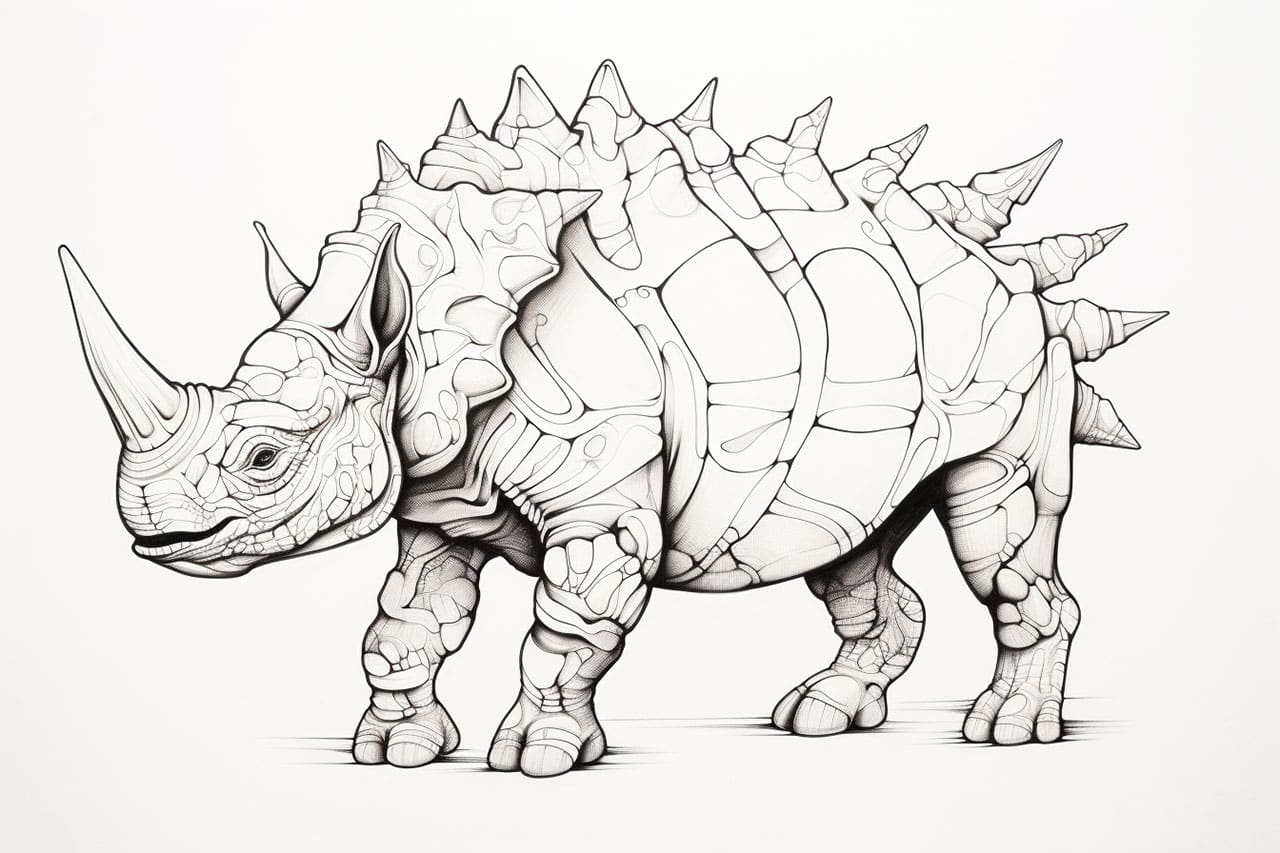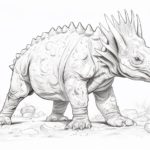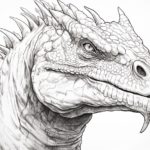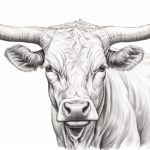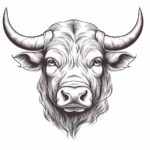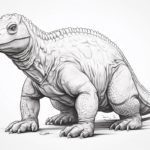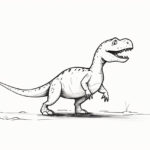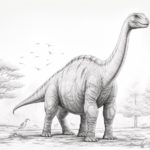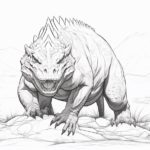Welcome to this step-by-step tutorial on how to draw a triceratops. Drawing a triceratops can be a thrilling and educational experience. Triceratops was a fascinating dinosaur with its unique features, such as the three horns on its face and the frill on the back of its head. In this tutorial, we’ll break down the process into easy-to-follow steps, allowing you to create a lifelike and impressive triceratops drawing. Let’s embark on a prehistoric journey and bring this majestic dinosaur to life on paper!
Materials Required
Step 1: Draw the Basic Shapes
Start by drawing the basic shapes of the triceratops. Draw a large oval for the body and a smaller oval for the head. Sketch a curved line for the neck and a straight line for the tail. Add circles for the eyes and a larger circle for the frill on the back of the head.
Step 2: Refine the Shapes
Next, refine the basic shapes by adding more details. Draw the legs and the arms, making sure that they are thick and sturdy to support the weight of the triceratops. Add curves to the body and the frill, making them more lifelike.
Step 3: Sketch the Details
Now it’s time to add the details to the triceratops drawing. Sketch the three horns on the face, with the larger one on the nose and the two smaller ones above the eyes. Add the beak-like mouth and the small nostrils. Draw the scales on the body and the frill, adding texture to the dinosaur’s skin.
Step 4: Add Shading and Texture
To make your triceratops drawing more realistic, add shading and texture. Shade in the areas where shadows would naturally fall, such as under the body and the frill. Add texture to the skin by using short, curved lines to show the scales.
Step 5: Final Touches
Once you’ve completed the shading and texture, take a step back and look at your drawing as a whole. Make any necessary adjustments and add any final touches that you feel are necessary to bring out the true essence of the triceratops.
Conclusion
Congratulations! You have successfully drawn a triceratops, the iconic dinosaur from the prehistoric era. Drawing a triceratops can be a rewarding experience, allowing you to explore the world of dinosaurs and bring a piece of history to life on paper. With practice and dedication, you can create even more detailed and realistic triceratops drawings. So, grab your pencil and unleash your creativity to continue your artistic journey through the world of dinosaurs!
Gallery of Triceratops Drawings
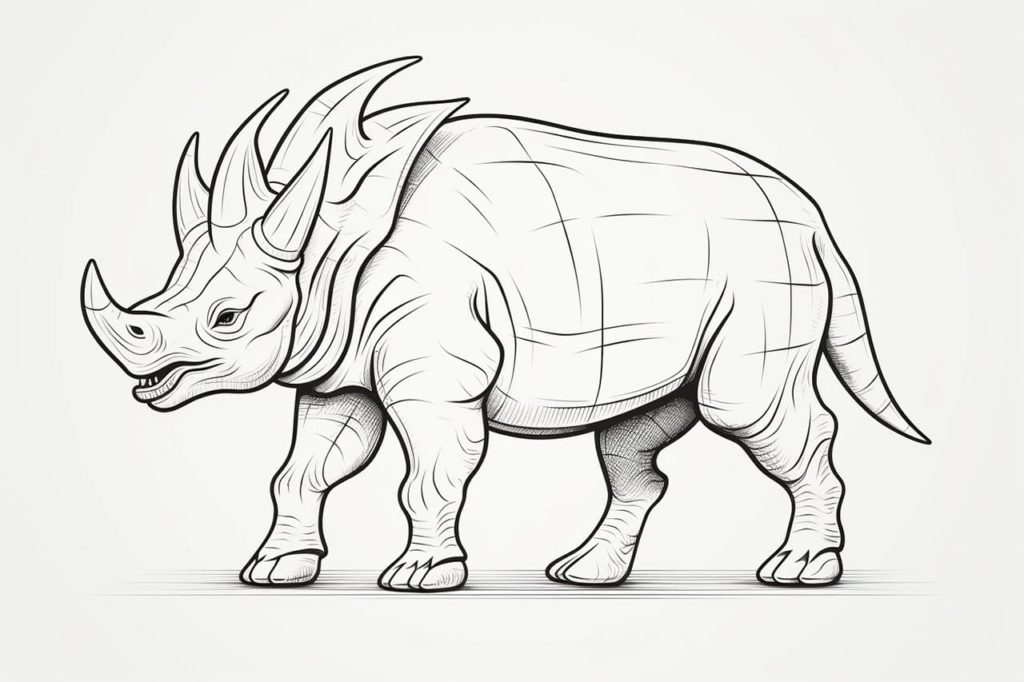
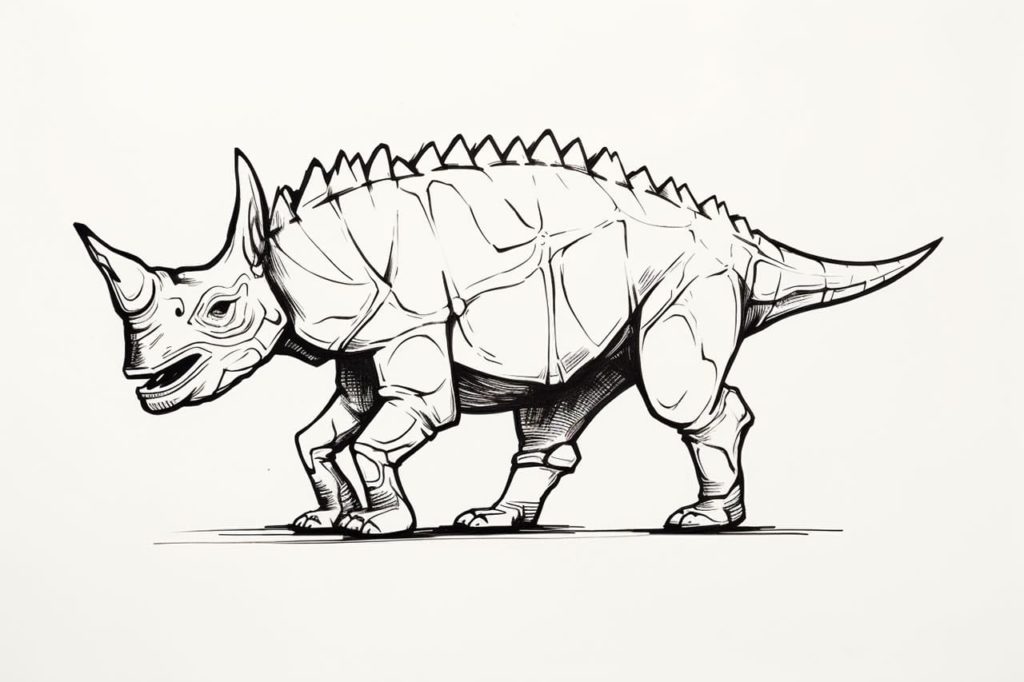
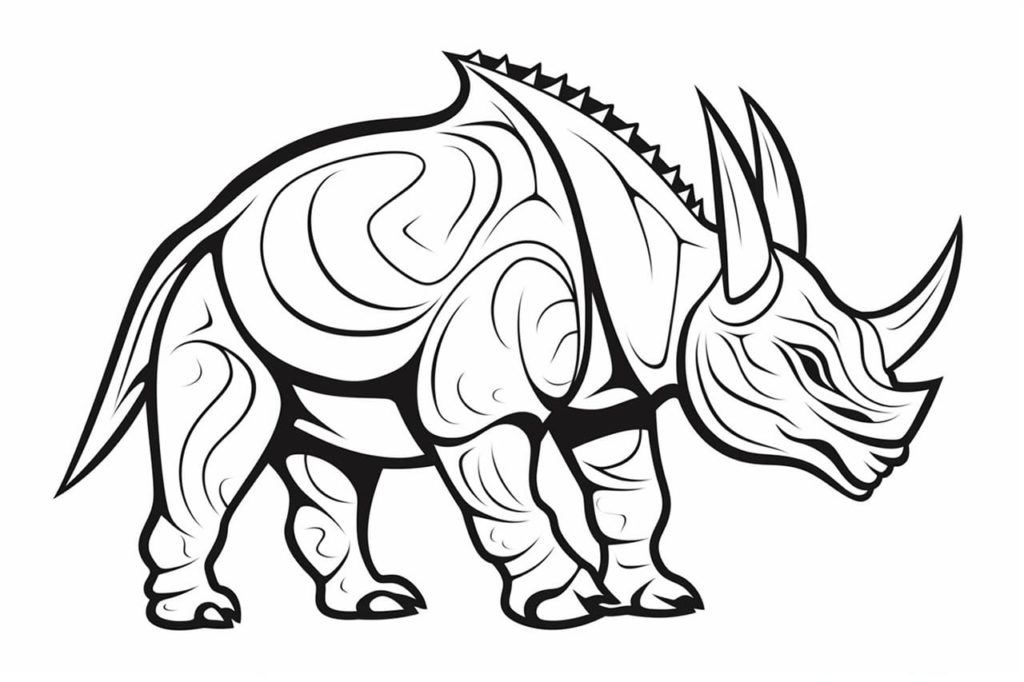
Fun Facts about Triceatops
- Name Meaning: Triceratops, which means “three-horned face,” derives its name from the three prominent horns on its skull.
- Herbivorous Diet: Triceratops were herbivores, meaning they only ate plants. Their diet likely consisted of ferns, cycads, and other vegetation prevalent during the Late Cretaceous period.
- Horn Arrangement: Triceratops had two large horns above its eyes, which could grow up to 3 feet (1 meter) long, and a smaller horn on its nose. These horns likely served for defense against predators and possibly in intraspecific combat during mating rituals or territorial disputes.
- Frill Function: The frill on the back of the triceratops’ skull was likely used for display and protection. It may have served as a deterrent to predators or as a way to attract mates.
- Size and Weight: Triceratops were some of the largest land animals of their time, measuring up to 30 feet (9 meters) in length and weighing as much as 12 tons.
- Bipedal or Quadrupedal: While triceratops were primarily quadrupedal (walking on four legs), they were capable of rearing up on their hind legs to reach higher vegetation or to intimidate rivals.
- Discovery and Fossil Record: Triceratops fossils have been found in North America, particularly in regions such as Montana, South Dakota, and Wyoming. The first Triceratops fossil was discovered in the late 19th century.
- Species Diversity: Several species of Triceratops have been identified, with some variations in horn shape and size among different specimens. Triceratops horridus and Triceratops prorsus are two well-known species.
- Possible Social Behavior: Some evidence suggests that Triceratops may have exhibited social behavior, potentially living in herds or family groups. Fossilized trackways showing multiple individuals traveling together support this hypothesis.
- Extinction: Triceratops, like many other dinosaur species, became extinct at the end of the Cretaceous period, around 66 million years ago. The exact cause of their extinction is still debated, but theories include climate change, asteroid impact, and volcanic activity.
- Pop Culture: Triceratops is one of the most recognizable and popular dinosaurs, appearing frequently in movies, books, and other forms of media. It has become a symbol of the prehistoric world for many people.

